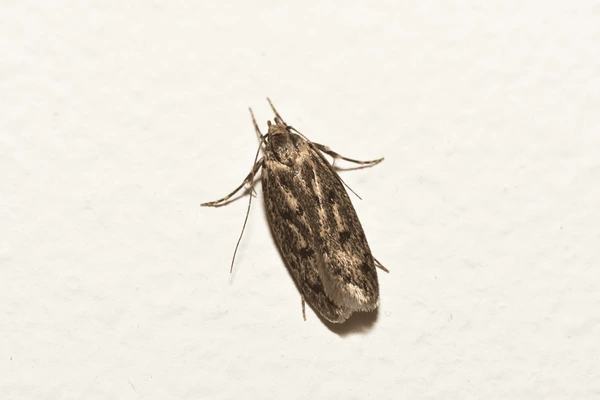Case-bearing clothes moth
Tinea Pellionella

Key Features:
The male cockroaches are approximately 25mm long with females 32mm long.
Both sexes are shiny and very dark brown, nearly black, in appearance. However, the early instar nymphs may be reddish-brown.
The distinctive shape of the wings is noticeable in this species. In the males they cover approximately two thirds of the abdomen, whereas those of the female are vestigial.
Biology:
The adult female lays eggs and attaches them to the substrate with a glue-like substance. The eggs are distinctive in their appearance having clear longitudinal ridges.
The larva emerges from the egg, constructs its silken case and proceeds to feed. Once mature the larva seals both ends of the case with silk and pupates within the case.
The adult emerges from the pupal case. The adult moth lives for around 2 to 3 weeks.
In common with other insects, development times are influenced by temperature, relative humidity, moisture content, quantity and quality of food.
Distribution:
Wide distribution in the Holarctic Region and Australia. The Holarctic region covers the whole of Europe (as far as the North Pole). Northern Africa, Asia Minor and the Middle East, the northern part of the Arabian peninsula, Soviet Asia, China, Korea, Japan, North America and the adjacent islands to the north, including Greenland, and extends in the south to central Mexico.
Significance:
The case-bearing clothes moth is a serious pest when it is encountered feeding on a wide variety of material of animal origin such as woollens, furs, etc.
Damage from larval feeding can be severe and the larvae are often difficult to detect. Typically damage occurs to “neglected” areas such as carpets under heavy furniture.
Control:
All carpeted areas and soft furnishings should be treated.
As these insects may be associated with birds’ nests, the roof space should be examined and treated if
necessary
A non-staining insecticide is recommended.
